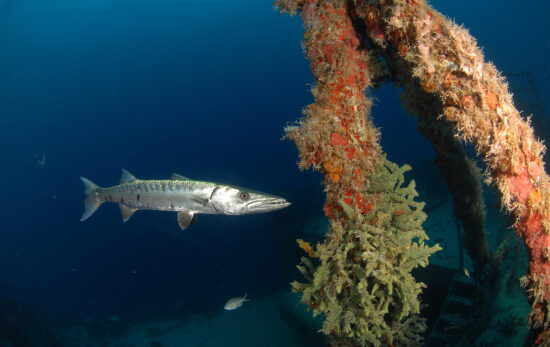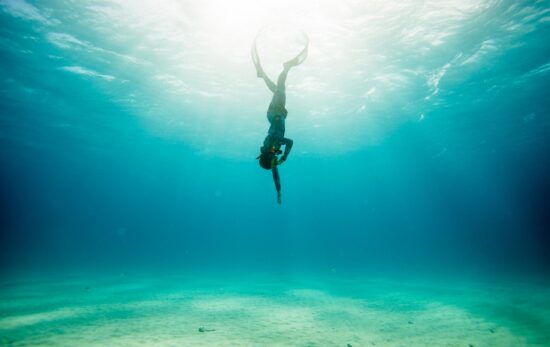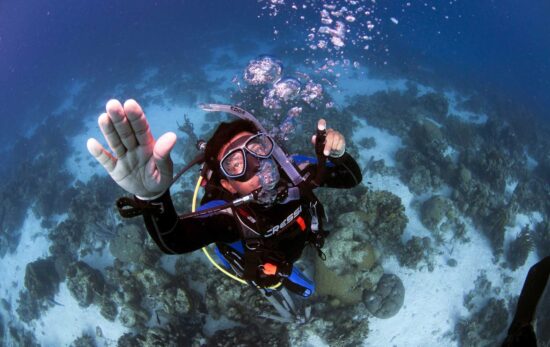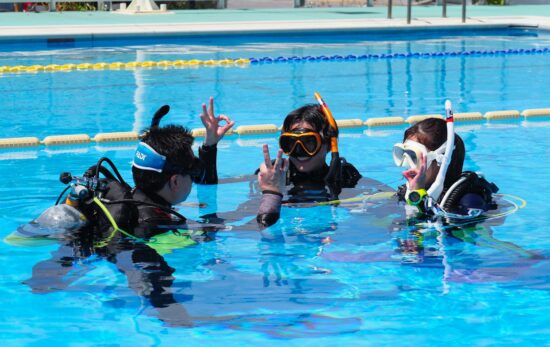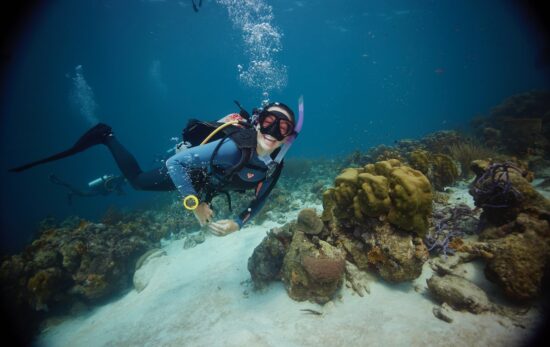Interested in learning how to scuba dive? You’ve come to the right place. In this article, we’ll cover everything you need to know about becoming a scuba diver. So you can go scuba diving for the first time and stop asking yourself, “What is scuba diving like?”
The PADI Open Water Diver Course
If you want to call yourself a scuba diver, you need a scuba certification. The first certification you can earn is called Open Water Diver, and it’s issued upon successful completion of the PADI Open Water Diver course.
A scuba certification allows you to get scuba cylinder (tank) air fills, rent dive gear, and book scuba diving adventures anywhere in the world. It also puts you in an exclusive club of underwater explorers and celebrities.
Why Are Scuba Certifications Required?
Scuba diving requires specific knowledge, skill,s and training – just like driving a car. During the Open Water Diver course, you’ll learn how to assemble a scuba unit, respectful ways to observe and interact with underwater life, how to manage your air supply, and other essential skills.
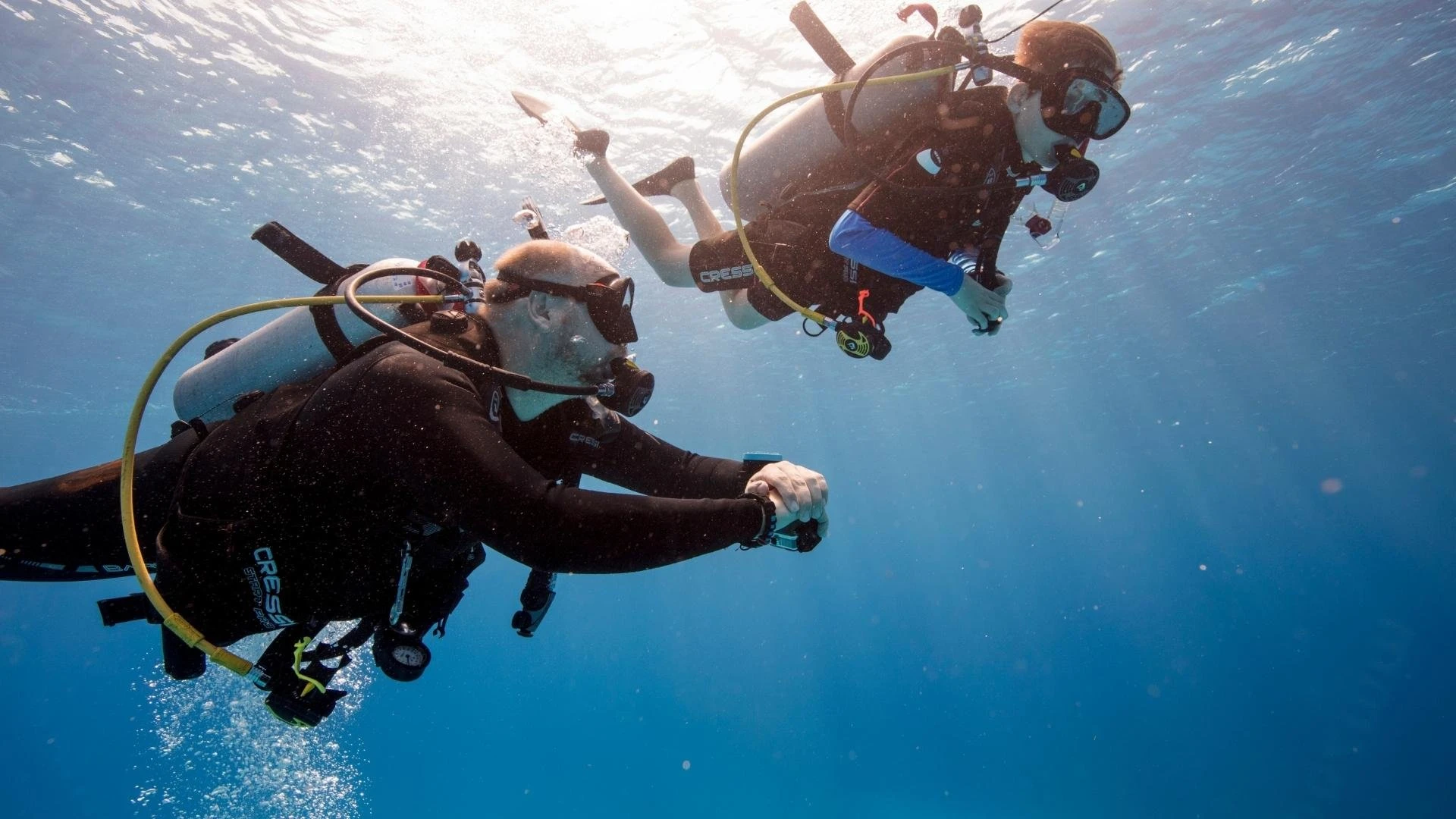
Try Scuba Diving Before Committing to a Certification Course
It’s hard to describe what scuba diving is like, so if you’re interested in scuba diving but not ready to commit to a class, try a Discover Scuba Diving® Diving experience. You’ll get to try on scuba gear and take your first breaths underwater under the supervision of an experienced scuba professional in a pool or pool-like environment.
A Discover Scuba Diving experience isn’t required, just an option for those who are unsure about a multi-day scuba certification course. If you’re hesitant about learning to dive, check out the Top 10 Myths About Scuba Diving.
Ready to start exploring the other two-thirds of our ocean planet? Read on to find out what equipment and skills you need to scuba dive and the steps leading up to scuba certification.

How To Prepare for Scuba Diving
You don’t have to be an excellent swimmer to be a scuba diver, but you do need to be comfortable in the water and know how to swim. During your scuba certification course, you’ll be asked to:
- Float or tread water for 10 minutes – You can lie on your back, tread water, ‘dog paddle’, or do anything else to stay afloat without using any flotation aids.
- Swim 200 meters/yards (or 300 meters/yards wearing a mask, fins, and snorkel) without stopping – There is no time limit, and you may use any swimming strokes you want.
There are many adaptive techniques that individuals with physical challenges can use to meet the waterskill requirements. People with paraplegia, amputations, and other challenges commonly earn PADI Open Water Diver certifications. Speak to a PADI Instructor, Dive Center, or Resort for more information.
Certain medical conditions require a doctor’s approval to participate in scuba diving activities. In some countries, a physician’s signature is required for diving regardless of how healthy you are. To avoid disappointment, download and review the medical questionnaire.
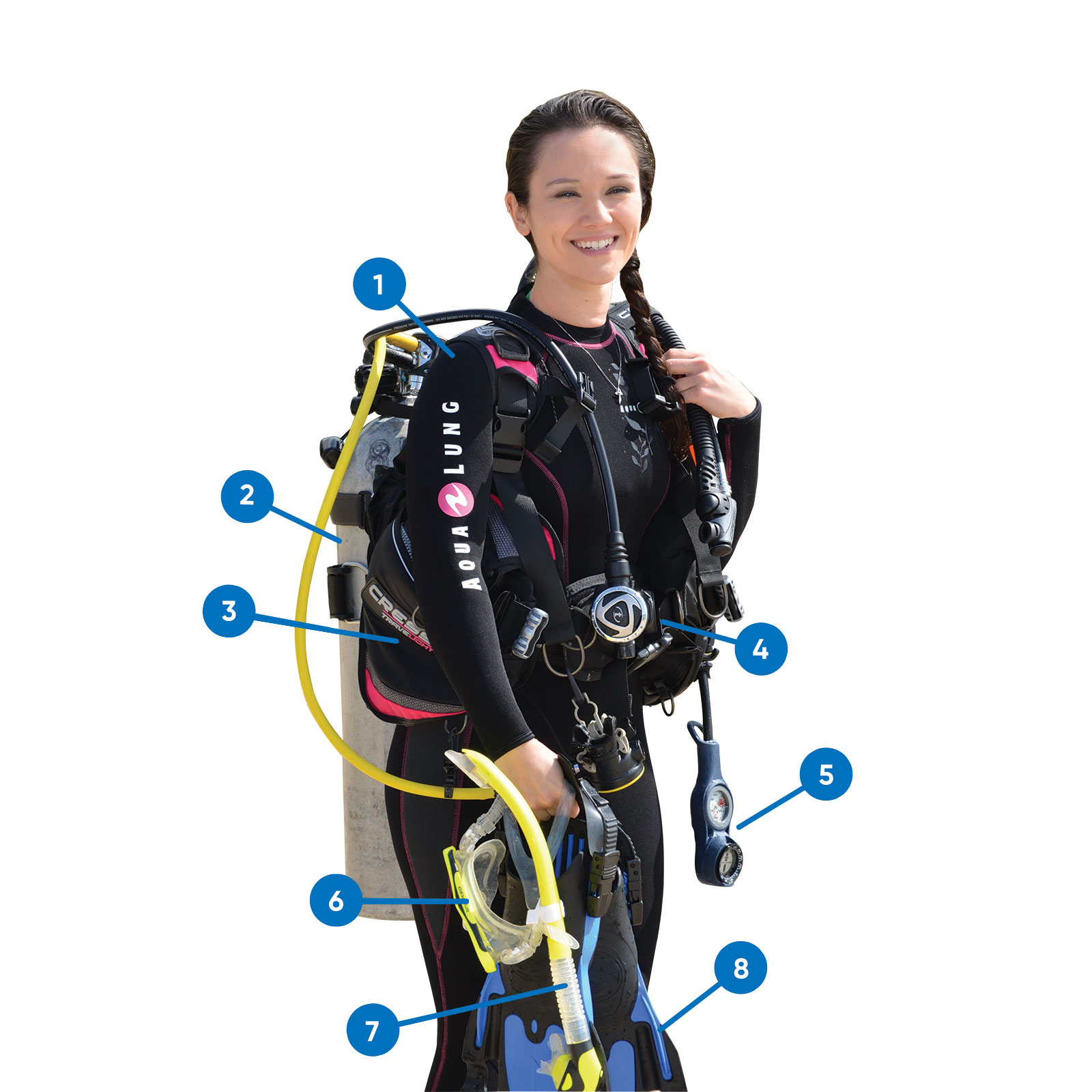
Basic Scuba Diving Equipment
When you’re enrolled in a class, most dive shops will provide all the scuba diving equipment you need either as a loan or rental, including a:
- Wetsuit or dry suit
- Scuba tank
- BCD (Buoyancy Control Device)
- Regulator
- SPG (dive computer, optional)
Most dive shops will ask you to provide your own:
If you already own a snorkel set, bring your snorkel, mask, and fins to the dive shop before your first in-water session. Some high-quality snorkel masks can be used for scuba diving, but most snorkel fins are too flimsy. Check out these tips for buying a mask that fits.
If you’re learning to dive in cold water, you may also need to bring (or purchase) gloves and a hood. If you get cold easily, they’re well worth the investment!
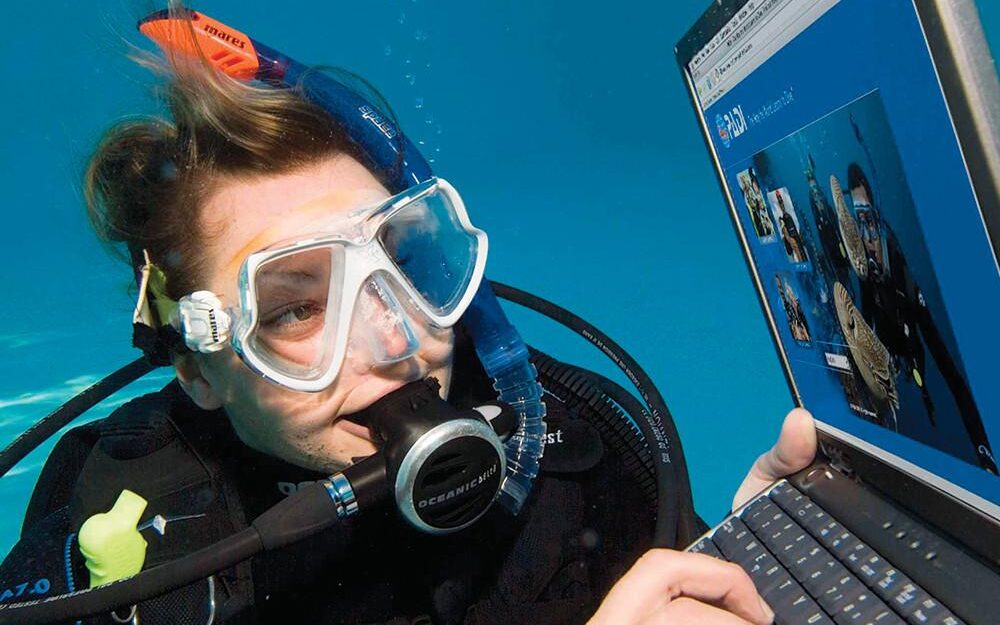
Scuba Certification: Step-By-Step
Let’s now look at a step-by-step guide to starting and completing the PADI Open Water Diver course.
Step 1: Consider Your Learning Preferences
If you don’t like tackling new skills while being surrounded by strangers, a private class may be preferable. If, however, you enjoy meeting new people, a group or semi-private class can be a lot of fun.
Step 2: Choose Where You Want To Do Your Training
There are three ways to earn your scuba certification:
- Do all your training close to home
- Start at home, finish on vacation (Open Water Diver Referral)
- Learn to scuba dive away from home
You can earn a scuba certification in as little as four days, but that can be a lot of pressure. Read more about each of the options listed above on our Learn To Dive page.
Step 3: Sign up for a Class
From start to finish, it takes four to seven days (on average) to earn a scuba certification.* You’ll spend some of that time studying on your own, but most of the time you’ll be working with an instructor.
In post-class surveys, more than 95% of student divers say they would highly recommend their PADI Instructor, but if you have a lot of PADI Dive Shops to choose from, here are some tips:
*You can take up to one year to complete your scuba certification course.
In case you’re wondering, how much does a scuba certification cost? That’s a tough question to answer. All PADI Dive Centers and Resorts are independently owned and operated, so prices vary depending on location, class size, and other factors.
Generally speaking, a scuba certification course costs about as much as a full day of surfing lessons, three hours of private golf lessons, or one amazing night out! If, while researching prices, you see a rate that’s drastically lower than all the others, ask what it includes. Some dive shops include everything for one price, others may list a price that only covers the course tuition and charge separately for online training, boat fees, etc.
The Easiest Way to Book Your Course: PADI Adventures
PADI Adventures is your digital doorway to underwater adventures. Designed for both novices and experienced divers, it makes exploring ocean depths as simple as using an app on your mobile device. You can find and book courses and fun dives anywhere in the world by tapping a few keys without tedious planning. Whether you are searching for a class, want to continue your training in another location, or want to gain some experience after your training, PADI Adventures can help you every step of the way. Read more about the cool features available via PADI Adventures here.
Step 4: Knowledge Development
There are three main parts to a scuba certification:
- Home study online or classroom learning (knowledge development)
- Skill practice in a pool or pool-like environment (confined water)
- Open water scuba dives
Everyone begins their scuba course with knowledge development. With a shift towards digital learning, the majority of dive centers, instructors, and students now use the PADI eLearning® platform. During this part of your training, you’ll learn all about scuba equipment and terminology and watch videos of diving skills. With PADI eLearning, you can complete this portion at home, at your own pace, using a computer or mobile device.
While the trend is towards online learning, some dive centers still offer the option of in-person knowledge development with regularly scheduled classroom sessions. This traditional method requires the purchase of a manual for home study between classes. Although not as common anymore, this remains an option for those who prefer a more tactile learning experience. If you’re not sure about online training, remember you can start your scuba certification class online for free. Give it a try, and if it doesn’t suit you, you can always ask your dive shop about the book and classroom route.
Step 5: Confined Water
You’ll take your first breaths underwater in a pool or pool-like environment. Your instructor will demonstrate scuba skills one at a time, then help you practice each one until you’ve mastered it.
The PADI Open Water Diver course is mastery-based and designed to help new divers build confidence in their skills. For example, you’ll first practice clearing a small amount of water from your mask. Once you’re comfortable, you’ll work your way up to filling your entire mask with water and clearing it out.
Confined water sessions are also where you’ll practice putting together a scuba unit. You’ll do this at least five times or until it becomes second nature.
Step 6: Open Water Dives
Once you’ve mastered basic scuba skills in confined water, you’ll go scuba diving in open water. ‘Open water’ can be the ocean, a lake, a quarry, or even hot springs. Your PADI Instructor will be by your side the entire time.
Your first two dives will be to 12 meters/40 feet or shallower. The maximum depth allowed for your two final dives is 18 meters/60 feet.
You’ll make four open water dives in total, usually over two days. During each dive, you’ll:
- Complete a pre-dive safety check
- Practice maintaining your position in the water (buoyancy)
- Perform skills you learned in confined water
- Explore the dive site
On the final dive, you and your class (or buddy) will create a dive plan. Under the supervision of your instructor or a qualified assistant, you’ll dive your plan, paying attention to your air pressure and other safe diving practices. This final exercise helps ensure you’re ready to make dives on your own.
Step 7: Congratulations, You’re a Diver!
On completion of the PADI Open Water Diver course, you’ll receive a digital PADI eCard™.
Your scuba certification is good for life, and if you ever want to refresh your skills, you can take a scuba refresher (PADI ReActivate) program.
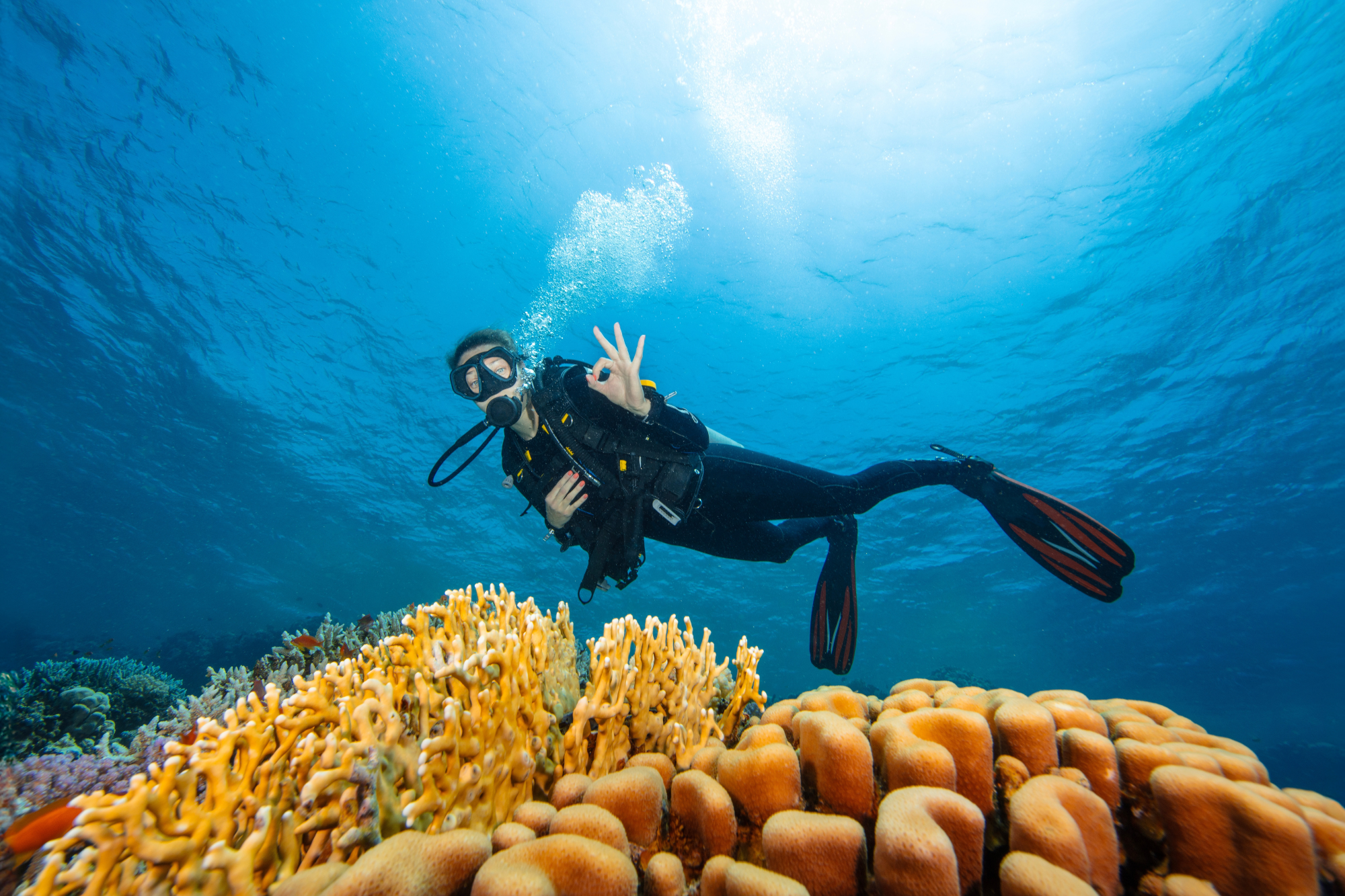
Next Steps
Most divers are curious about the next step after earning their Open Water Diver certification. As a PADI Open Water Diver, you can enjoy diving to a maximum depth of 18 meters/60 feet with a dive buddy, and gaining experience by diving as often as possible is the best next step.
PADI offers many diving courses to help you develop your skills and explore new types of diving, such as altitude diving, Dive Against Debris, and digital underwater photography. Most PADI Specialty courses are open to Open Water Divers.
You can also choose to continue your education with further core-level courses like the Advanced Open Water Diver course and then the Rescue Diver course. You could even choose to have a career in diving as a PADI Open Water Scuba Instructor! Remember, there are many great options in diving, and you are only limited by your imagination.
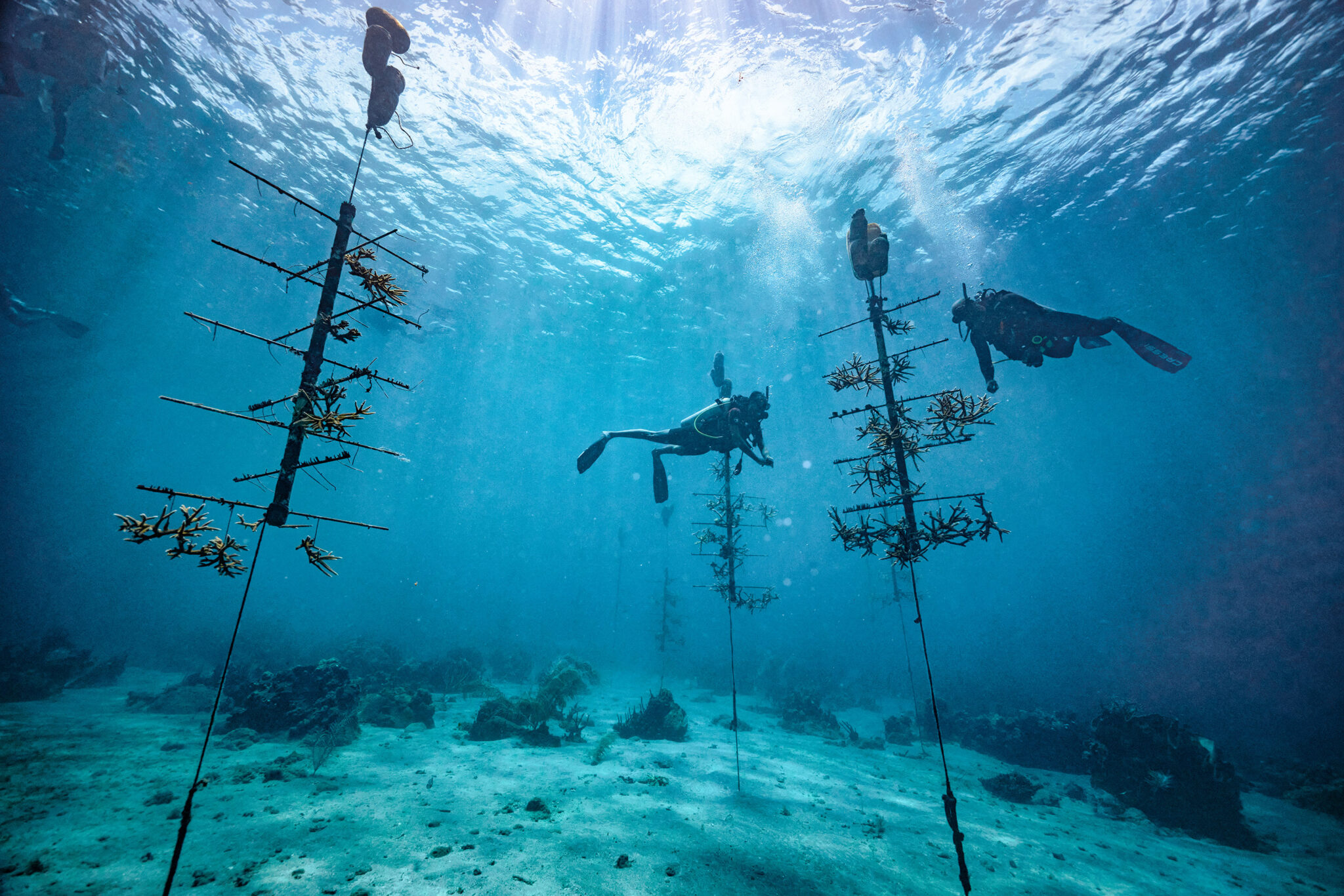
Seek Adventure. Save the Ocean.
The PADI Open Water Diver course is the world’s most popular and widely recognized scuba diving certification. PADI Instructors and Dive Shops issue more than one million certifications every year as part of our collective mission to restore ocean health. When you choose PADI, you support independent businesses committed to ocean conservation and like-minded, mission-driven organizations. Learn more on our conservation page.
Questions?

